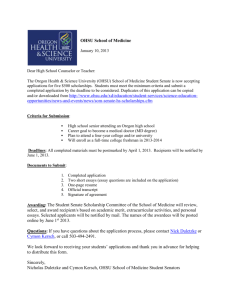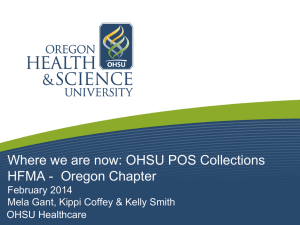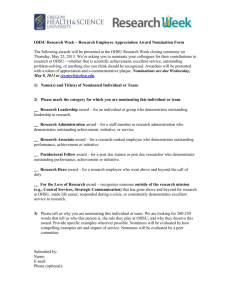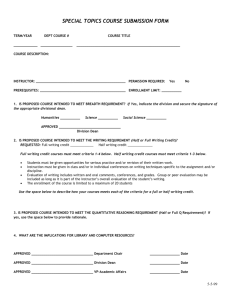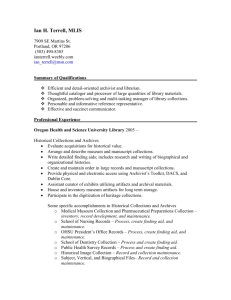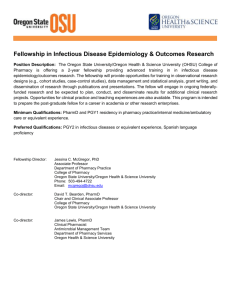SON Student Incidents - Oregon Health & Science University
advertisement
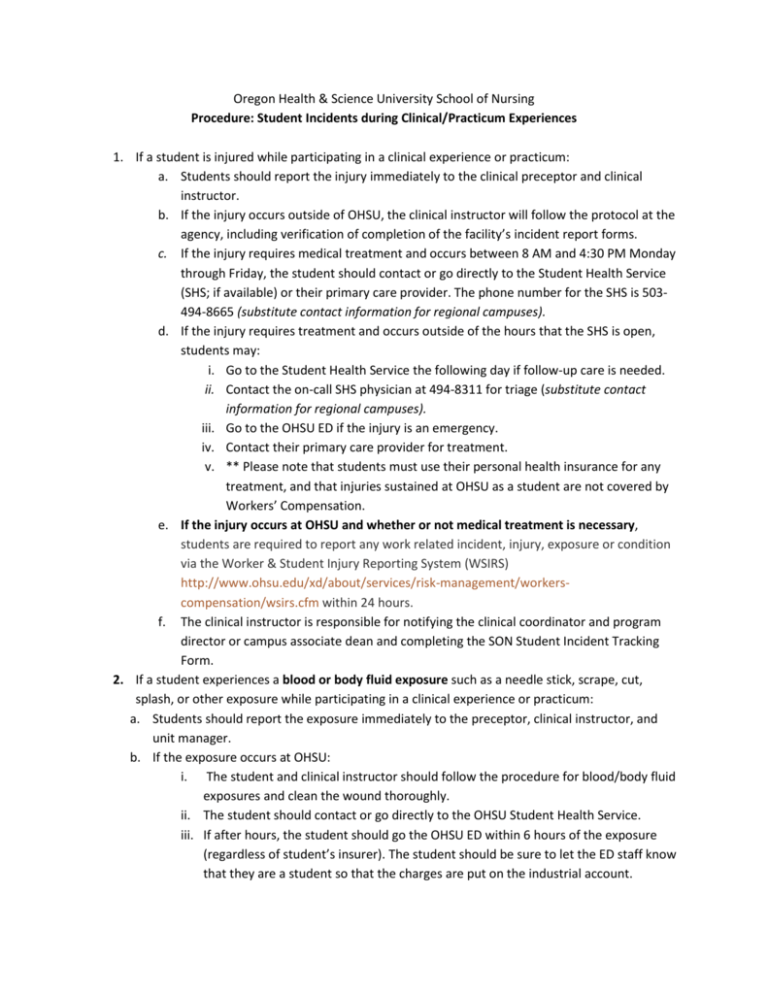
Oregon Health & Science University School of Nursing Procedure: Student Incidents during Clinical/Practicum Experiences 1. If a student is injured while participating in a clinical experience or practicum: a. Students should report the injury immediately to the clinical preceptor and clinical instructor. b. If the injury occurs outside of OHSU, the clinical instructor will follow the protocol at the agency, including verification of completion of the facility’s incident report forms. c. If the injury requires medical treatment and occurs between 8 AM and 4:30 PM Monday through Friday, the student should contact or go directly to the Student Health Service (SHS; if available) or their primary care provider. The phone number for the SHS is 503494-8665 (substitute contact information for regional campuses). d. If the injury requires treatment and occurs outside of the hours that the SHS is open, students may: i. Go to the Student Health Service the following day if follow-up care is needed. ii. Contact the on-call SHS physician at 494-8311 for triage (substitute contact information for regional campuses). iii. Go to the OHSU ED if the injury is an emergency. iv. Contact their primary care provider for treatment. v. ** Please note that students must use their personal health insurance for any treatment, and that injuries sustained at OHSU as a student are not covered by Workers’ Compensation. e. If the injury occurs at OHSU and whether or not medical treatment is necessary, students are required to report any work related incident, injury, exposure or condition via the Worker & Student Injury Reporting System (WSIRS) http://www.ohsu.edu/xd/about/services/risk-management/workerscompensation/wsirs.cfm within 24 hours. f. The clinical instructor is responsible for notifying the clinical coordinator and program director or campus associate dean and completing the SON Student Incident Tracking Form. 2. If a student experiences a blood or body fluid exposure such as a needle stick, scrape, cut, splash, or other exposure while participating in a clinical experience or practicum: a. Students should report the exposure immediately to the preceptor, clinical instructor, and unit manager. b. If the exposure occurs at OHSU: i. The student and clinical instructor should follow the procedure for blood/body fluid exposures and clean the wound thoroughly. ii. The student should contact or go directly to the OHSU Student Health Service. iii. If after hours, the student should go the OHSU ED within 6 hours of the exposure (regardless of student’s insurer). The student should be sure to let the ED staff know that they are a student so that the charges are put on the industrial account. iv. If the student is initially seen in the ED, he/she should report to the Student Health Service on the next business day for follow-up. There is no charge to the student for blood and body fluid exposure follow-up. v. The hospital will provide an assessment of the exposure source at no cost to the source. c. If the exposure occurs outside of OHSU: i. The student and clinical instructor should follow the protocol for blood and body fluids exposure at the agency, including urgent care and completion of incident report forms. ii. Initial evaluation of the student and the source patient are usually done at the site according to their policy. If the facility does not the ability to provide immediate care, evaluation should be done by an appropriate professional provider outside of the facility. iii. If immediate care is available at the student’s local campus or primary care provider, the student should seek evaluation as soon as possible, preferably in less than 6 hours. iv. If immediate care is not available at the clinical agency, contact the SHS (494-8665) or the Student Health Service physician after hours (494-8311). (Substitute contact information for regional campuses.) v. In Portland, the student should report to the OHSU Student Health Service on the next business day for follow-up with the clinical agency/facility. If evaluated at a local campus facility or a primary care provider, the student should follow-up as directed with the clinical agency/facility. vi. There is no charge to the student for blood and body fluid exposure follow-up with SHS. If treatment requires a referral outside of SHS the student will be responsible to use their personal health insurance and will incur any associated fees according to their insurance policy. d. If the exposure occurs at OHSU and whether or not medical treatment is necessary, students are required to report any work related incident, injury, exposure or condition via the Worker & Student Injury Reporting System (WSIRS) http://www.ohsu.edu/xd/about/services/risk-management/workerscompensation/wsirs.cfm within 24 hours. e. The clinical instructor is responsible for notifying the course coordinator and program director or campus associate dean and completing the SON Student Incident Tracking Form. 3. If a student is involved in a medication error or patient injury: a. Students should report the incident immediately to the preceptor and clinical instructor. b. The student, preceptor, and clinical instructor should follow the agency procedures to ensure the safety of the patient/client based on the nature of the incident. c. If the incident occurs outside of OHSU, the student and faculty should follow the agency protocol for reporting the incident. d. If the incident occurs at OHSU, students are required to submit a report a report on the Patient Safety Net prior to the end of the clinical shift. The report must be initiated by the preceptor or faculty; the student will not be able to log in independently, but must be present to complete the documentation. e. The clinical instructor is responsible for notifying the course coordinator and program director or campus associate dean and completing the SON Student Incident Tracking Form. 4. Copies of the SON Student Incident Tracking Form should be sent to the course coordinator, program director or campus associate dean, and the appropriate Senior Associate Dean. A compiled report of incidents will be submitted to Academic Operations annually. Approved by Academic Operations 3/11/2013 Approved by Risk Management 3/20/2013
